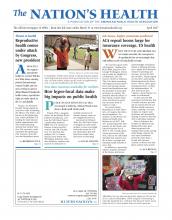Police who fatally shoot civilians may unconsciously be motivated by racial bias, a new study finds.
The study was published in Criminology & Public Policy in February.
Researchers analyzed data compiled from The Washington Post’s records on 990 fatal police shootings in 2015, looking at the differences among white, black and other minority civilians in the incidents.
The researchers determined a threat perception failure on the part of the officers involved in the shootings using two indicators: whether the civilian was attacking law enforcement or other civilians before being fatally shot and whether the civilian was armed at the time of the shooting.
According to the analysis, 15 percent of black civilians were unarmed, compared with 11 percent of civilians of other ethnic or racial minorities and 6 percent of white civilians. Similarly, 24 percent of blacks, 31 percent of other ethnic or racial minorities and 17 percent of whites had not attacked officers or other civilians before being fatally shot.
The findings show that “civilians of other races/ethnicities were significantly more likely than whites to have been fatally shot because of an apparent threat perception failure,” the researchers stated, pointing to police officers’ implicit biases, or unconscious prejudices that affect their interactions with people.
The researchers called for a national police use-of-force database that includes all incidents, not only those resulting in death. Government data from the FBI’s Uniform Crime Reporting Program and the National Vital Statistics System are flawed because they only account for incidents involving deadly force, the researchers said. However, only about 15 percent to 25 percent of civilians die in police shootings, according to previous studies. Prior research has also found that government databases underreport the actual number of civilian deaths by police force.
With a comprehensive police use-of-force database, “We could have more informed discussions about things like bias and the decision to use force,” lead study author Justin Nix, PhD, MA, assistant professor of criminal justice at the University of Louisville, told The Nation’s Health. “The research community can do better, more rigorous analyses (and) the public could be more aware of what’s going on.”
Nix said he does not think that police officers can unlearn their implicit biases, but that they can be made aware of how such biases affect their policing. Training programs to help police recognize implicit bias, as well as community policing activities that promote positive interactions between police and civilians, could also be effective, the researchers said.
They noted that recent media attention has placed police under greater public scrutiny, driving conversations about the use of deadly force against minority civilians.
“Given the current state of affairs in the United States, it is imperative that researchers continue to consider whether suspect race significantly influences police use of force,” the researchers stated.
For more information, visit http://onlinelibrary.wiley.com/doi/10.1111/1745-9133.12269/full.
- Copyright The Nation’s Health, American Public Health Association









